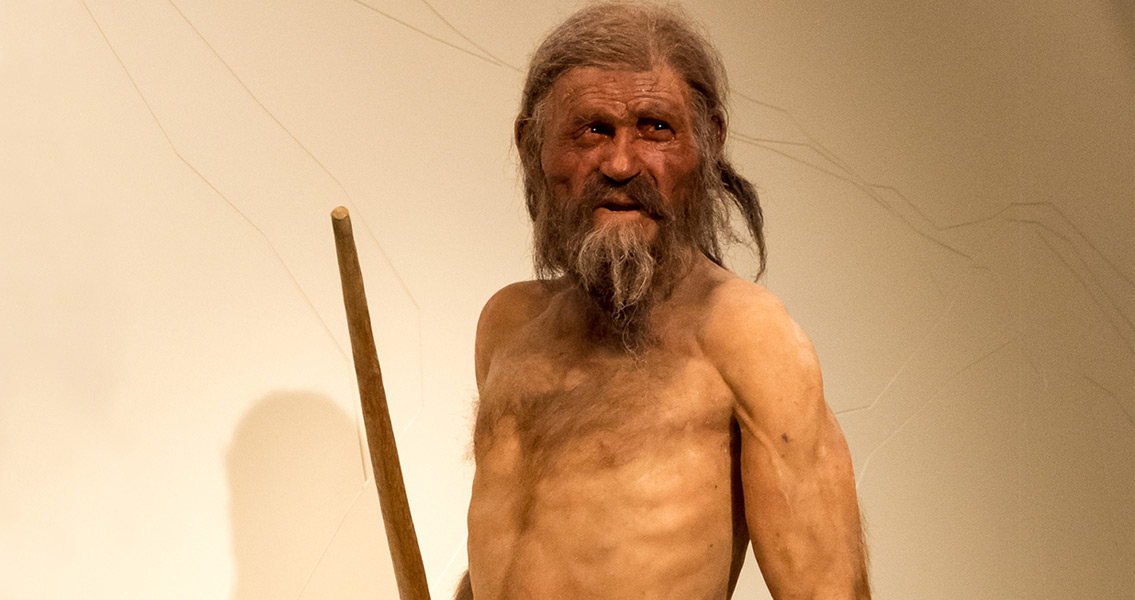<![CDATA[It’s official, with a total of 61 skin markings grouped across 19 areas of his body, the Tyrolean Iceman known as Oetzi has taken the title of Oldest Tattooed Human after mistakes were discovered in the radiocarbon dating process performed on the previous record holder, a Cinchorro mummy discovered in South America. The radiocarbon dates for Oetzi have confirmed the Iceman died sometime between 3370 and 3100 BCE, making him approximately 5,300 years old. Markings on Oetzi were noticed almost immediately after his discovery inside a melting glacier in the Oetztal Alps in 1991. Using non-invasive photographic imaging techniques, the tattoos were recently investigated at the South Tyrol Museum of Archaeology. Researchers there found that the tattoos consisted primarily of parallel lines which ranged between 2 mm (0.07 inches) and 8mm (0.03 inches) apart, 1 mm (0.03 inches) to 3 mm (0.1 inches) wide, and 7 mm (0.2 inches) and 40 mm (1.5 inches) long. The tattoos were created by rubbing charcoal into very fine incisions. The tattoos were located predominantly along the lower section of the mummy’s legs, with the longest tattoos found around the left hand wrist. Two perpendicular crosses were also discovered: the first on the right knee, the second on the left ankle. According to researchers, the 61 markings found on Oetzi represent actions performed in conjunction with therapeutic and/or social practices established within his culture long before he was even born. The South American mummy initially believed to be the oldest human sporting tattoos, officially named Mo- 1 T28 C22, was recovered with 95 other bodies in El Murro, Chile, in 1983, after having been buried under an alpine glacier. One of the first tattoos researchers noticed was a series of mustache-like black dots (eight marks to the left of the nose, four to the right) across his upper lip. The naturally mummified remains belong to a Cinchorro male who was between 35 and 40 years old when he died. The Cinchorro people were a pre-ceramic fishing group who resided along the coastal areas of southern Chile and Peru sometime between 9,000 and 3,100 years ago. Known as the oldest human mummies, their burials included both artificial and natural mummification. According to Aaron Deter-Wolf, an expert on the anthropology of tattooing from Middle Tennessee State University, the confusion in determining the older of the two mummies was the result of a simple error which occurred when the original radiocarbon date of 3830 ± 100 BP for Mo- 1 T28 C22 was first reported. Before Present (BP) is a standard time scale used in relation to radiocarbon dating, where “Present” is defined as 1950 CE. This date was mistakenly shown in later reports as 3830 ± 100 BCE, an error that was repeated in following studies. According to the original radiocarbon dates, it’s clear that Oetzi's remains predate the Cinchorro mummy, Mo-1 T28 C22, by a minimum of 500 years. The team responsible for cataloging all the available data associated with known and tattooed human mummies included experts from the National Museum of Natural History, the Centre de Recherche et de Documentation sur l’Océanie at Aix-Marseille Université, and the Smithsonian Institution. The result is a list that includes sites which span the world and cover a period of time between approximately 3370 BCE and 1600 CE. Image courtesy of Wikimedia Commons user: Thilo Parg]]>
Oetzi Confirmed to be Oldest Tattooed Human
